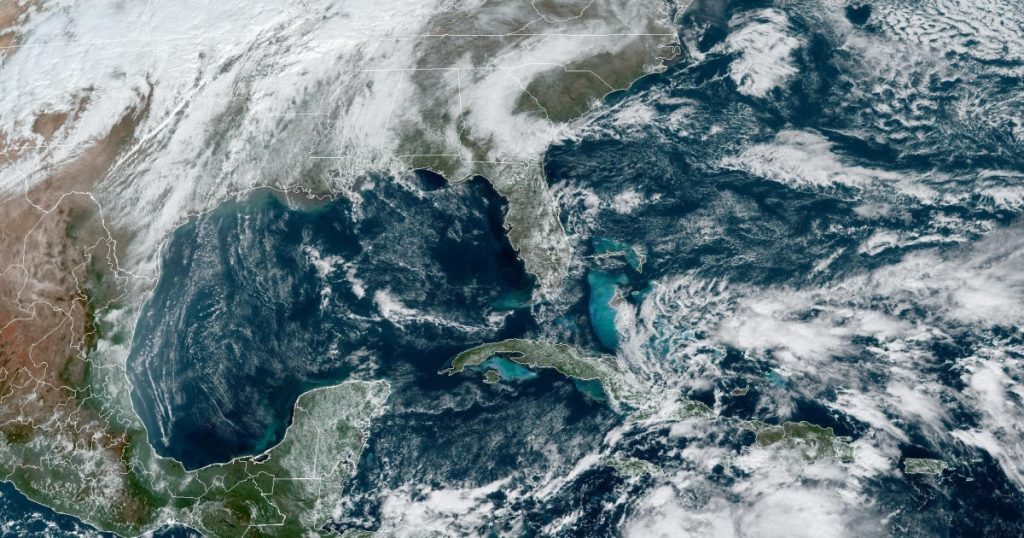Tropical Storm Rafael, previously known as Potential Tropical Cyclone 18, has formed and is forecast to become a hurricane on Tuesday. As of Monday, it is located about 175 miles south of Kingston, Jamaica, with maximum sustained winds of 45 mph and moving north at around 9 mph. Rafael is the 17th named storm of the Atlantic hurricane season and will be the 11th hurricane if it strengthens further as expected. The storm is expected to bring heavy rainfall to parts of Florida and nearby areas of the Southeast later in the week.
The National Hurricane Center has issued a tropical storm watch for the Lower and Middle Florida Keys and the Dry Tortugas as Rafael approaches the United States. A hurricane warning has been issued for the Cayman Islands, and a tropical storm warning is in effect for Jamaica. Cuba has also issued a hurricane watch for certain provinces and a tropical storm watch for other areas in anticipation of Rafael’s impact. Forecasters expect the storm to move near Jamaica late on Monday, then approach the Cayman Islands by late Tuesday, potentially at hurricane intensity, before moving towards Cuba on Wednesday.
NHC forecasters have stated that there is a high likelihood that Rafael will strengthen into a hurricane in the next 48 hours. The storm is forecasted to bring 3 to 6 inches of rain across much of the western Caribbean, with up to 9 inches possible in some areas. The heaviest precipitation is expected in Jamaica, where minor coastal flooding is possible. In the Cayman Islands, storm surge up to 3 feet is expected on Tuesday. There is also a risk of flooding and mudslides in parts of Jamaica and Cuba as Rafael progresses through the region.
As the 17th named storm of the Atlantic hurricane season, Rafael is expected to intensify into a hurricane by Tuesday, posing potential risks to areas in the Caribbean and the Southeastern United States. Forecasters have issued tropical storm and hurricane warnings for the Cayman Islands, Jamaica, and parts of Cuba in anticipation of Rafael’s impact. Heavy rainfall, strong winds, and storm surge are among the threats associated with the storm. Residents in the affected areas are advised to stay informed about the latest forecasts and take necessary precautions to ensure their safety.
The National Hurricane Center has been closely monitoring the development of Tropical Storm Rafael, which formed on Sunday and is expected to strengthen into a hurricane on Tuesday. Rafael is moving north towards Jamaica and the Cayman Islands, with the potential to impact these regions with heavy rainfall, strong winds, and storm surge. While uncertainties remain regarding the exact path and intensity of the storm, authorities are taking proactive measures by issuing warnings and advisories to keep residents informed and prepared for any potential impacts from Rafael.
Overall, Tropical Storm Rafael is a significant weather system that has the potential to become a hurricane and affect parts of the Caribbean and the Southeastern United States. As the storm progresses, residents in the Cayman Islands, Jamaica, Cuba, and surrounding areas are urged to closely monitor the latest updates from the National Hurricane Center and local authorities. Proper preparations and safety measures should be taken to minimize the risks associated with the storm, including heavy rainfall, flooding, and storm surge. It is essential for individuals in the affected regions to stay informed and follow recommendations from officials to ensure their well-being during this dynamic weather event.


